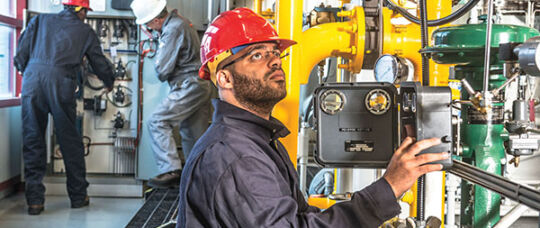The Best Guide To Roar Solutions
The Best Guide To Roar Solutions
Blog Article
Not known Factual Statements About Roar Solutions
Table of ContentsEverything about Roar SolutionsThe smart Trick of Roar Solutions That Nobody is Talking AboutRoar Solutions Things To Know Before You Get This
In order to protect installments from a prospective explosion an approach of analysing and identifying a possibly dangerous area is required. The objective of this is to ensure the correct option and setup of tools to eventually avoid a surge and to make certain safety of life.
(https://pagespeed.web.dev/analysis/https-training-roarsolution-com-au/mm9wy036rp?form_factor=mobile)
No devices ought to be mounted where the surface area temperature of the devices is above the ignition temperature of the given threat. Below are some typical dirt harmful and their minimum ignition temperature level. Coal Dirt 380C 225C Polythene 420C (thaws) Methyl Cellulose 420C 320C Starch 460C 435C Flour 490C 340C Sugar 490C 460C Grain Dirt 510C 300C Phenolic Resin 530C > 450C Aluminium 590C > 450C PVC 700C > 450C Soot 810C 570C The likelihood of the danger being existing in a concentration high enough to cause an ignition will vary from area to place.
In order to identify this risk a setup is divided right into areas of threat depending upon the amount of time the harmful exists. These areas are described as Areas. For gases and vapours and dirts and fibres there are three areas. Zone 0 Zone 20 A harmful environment is extremely likely to be existing and might exist for extended periods of time (> 1000 hours annually) and even continuously Area 1 Zone 21 A dangerous ambience is possible however unlikely to be existing for lengthy periods of time (> 10 450 C [842 F] A classification of T6 indicates the minimum ignition temperature level is > 85 C [185 F] Harmful area electric devices perhaps designed for use in greater ambient temperatures. This would certainly suggested on the ranking plate e.g. EExe II C T3 Ta + 60C( This means at 60C ambient T3 will not be gone beyond) T1 T1, T2, T3, T4, T5, T6 T2 T2, T3, T4, T5, T6 T3 T3, T4, T5, T6 T4 T4, T5, T6 T5 T5, T6 T6 T6 A T Class ranking of T1 means the maximum surface temperature generated by the instrument at 40 C is 450 C. Thinking the associated T Class and Temperature level score for the equipment are proper for the location, you can constantly make use of an instrument with a more strict Division score than needed for the location. There isn't a clear solution to this question regrettably. It actually does depend upon the kind of tools and what fixings need to be executed. Equipment with certain test treatments that can't be done in the field in order to achieve/maintain third party score. Need to come back to the manufacturing facility if it is before the tools's service. Field Fixing By Authorised Employee: Complex testing may not be needed however particular procedures may need to be adhered to in order for the tools to preserve its 3rd party rating. Authorized employees need to be employed to perform the work appropriately Repair must be a like for like replacement. New component need to be considered as a straight replacement needing no special testing of the tools after the repair work is complete. Each piece of tools with a hazardous ranking should be assessed individually. These are outlined at a high level listed below, however, for more in-depth details, please refer straight to the standards.
The 6-Second Trick For Roar Solutions
The tools register is a comprehensive data source of equipment records that includes a minimum collection of fields to identify each item's place, technical specifications, Ex lover category, age, and ecological data. The proportion of Comprehensive to Close assessments will certainly be established by the Tools Danger, which is examined based on ignition threat (the possibility of a source of ignition versus the possibility of a flammable environment )and the unsafe area classification
( Zone 0, 1, or 2). Applying a robust Risk-Based Inspection( RBI )strategy is critical for making certain conformity and safety in managing Electrical Equipment in Hazardous Areas( EEHA).
Not known Details About Roar Solutions

In regards to eruptive threat, an unsafe location is an environment in which an explosive environment exists (or may be anticipated to be existing) in amounts that call for special precautions for the building, installation and use of equipment. Roar Solutions. In this article we explore the challenges faced in the office, the risk control procedures, and the required competencies to work safely
These materials can, in certain conditions, create eruptive atmospheres and these can have significant and heartbreaking consequences. Most of us are acquainted with the fire triangle get rid of any type of one of the 3 components and the fire can not happen, however what does this mean in the context of dangerous areas?
In most circumstances, we can do little regarding the degrees of oxygen in the air, but we can have significant influence on resources of ignition, for example electric tools. Dangerous locations are documented on the hazardous area classification drawing and are recognized on-site by the triangular "EX LOVER" indication. Below, amongst other essential information, zones are divided right into 3 kinds depending upon the hazard, the possibility and check out here period that an explosive environment will certainly exist; Zone 0 or 20 is deemed the most dangerous and Area 2 or 22 is considered the least.
Report this page